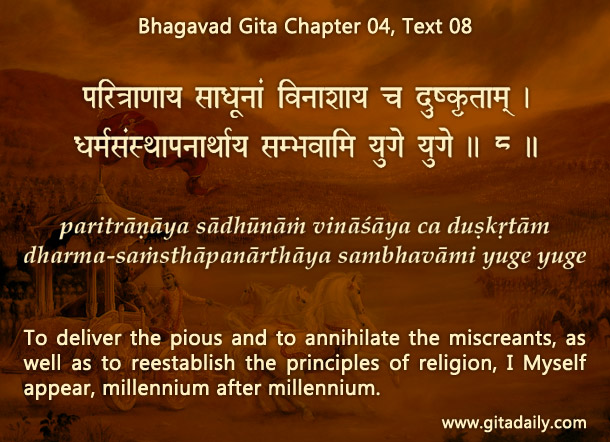
One of the Gita’s most-quoted verses (04.08) describes how Krishna descends to establish dharma. Less quoted, but no less significant is the next verse declaring that those who understand his pastimes attain liberation.
What is the connection between these two verses?
To understand, let’s analyze the word ‘dharma’. Etymologically, it comes from the root ‘dhri’, which means to sustain. Thus, dharma refers to that which sustains something, that which is its essential characteristic, that which makes it it.
To love and to serve is our nature – whatever we do, we always love and serve someone or something. So, love and service comprise our dharma.
Additionally, as souls, we are eternal and are meant to live on an eternal platform.
How can love and service on one hand and eternal existence on the other be integrated?
By directing our loving and serving propensity towards an eternal object, ultimately the supreme eternal truth, Krishna.
As krishna-bhakti integrates both seamlessly, it is our sanatana-dharma. We are meant to delight in our sanatana-dharma in a sanatana dhama, Krishna’s eternal abode where he performs ecstatic loving pastimes with his devotees.
To attain that abode, we need to redirect our love from the world to Krishna. This redirection happens when Krishna’s pastimes attract our heart, as the Gita (04.09) indicates. Though this redirection is ultimately an internal and individual process, it is enormously boosted aided by a supportive external environment. Establishing such a supportive socio-political environment is the social dimension of dharma. It is this social dharma that Krishna descends to establish, as the Gita (04.08) indicates.
Even when such an environment is lacking, as is the case in today’s world, still, if we practice bhakti-yoga, Krishna’s pastimes will attract our heart, establish us in dharma and finally grant eternal ecstasy.
Explanation of article:


Leave A Comment